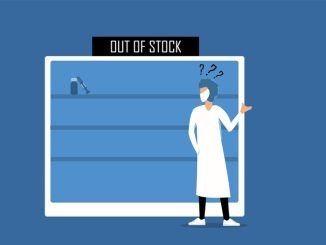
As reported by GP Online, The Royal College of General Practitioners (RCGP) issues a warning as figures reveal the share of NHS funding allocated to primary care is expected to hit an eight-year low
Figures published by the government in response to a question in parliament show that in 2023/24 the proportion of NHS funding spent on primary medical care is budgeted to fall to 8.4% – a smaller share than in any of the previous eight years.
The share of funding spent on primary medical care in 2015/16 was 8.8% – and it peaked at 9.2% in 2019/20 as investment under the five-year GP contract deal began.
However, by 2021/22 – the most recent year for which finalised spending figures are available – it had fallen to 8.6%. Budgeted spending for 2022/23 suggests an 8.5% share for primary medical care, and an 8.4% share in the current financial year.
NHS funding
RCGP chair Professor Kamila Hawthorne said it made ‘absolutely no sense’ that the share of NHS funding spent on primary care was being allowed to decline.
Funding for primary medical care was budgeted to be £12.9bn in 2023/24 – up from £8.7bn in 2015/16 according to figures provided by health minister Andrew Stephenson in response to a parliamentary question from shadow health and social care secretary Wes Streeting.
Despite the significant cash increase in funding over the past eight years, a large part of the rise has been invested via PCNs and the additional roles reimbursement scheme (ARRS) – worth £1.4bn alone in the current financial year – rather than through core general practice funding.
Growth in investment in primary medical care has also fallen well short of inflation in the second half of the five-year GP contract.
Investing in general practice
Professor Hawthorne said: ‘General practice is the bedrock of the NHS, and investing in it leads both to better health outcomes for patients and delivers value to the NHS. We now know that for every £1 invested in primary care, at least £14 is delivered in productivity across the working community – so it makes absolutely no sense that the proportion of spending in primary care is falling compared to acute care.
‘GPs and our teams have just had the busiest November on record, with more than 31m appointments delivered – a 30% increase on 2019, yet with 646 fewer fully qualified, full-time equivalent GPs. The average number of patients per GP in England is now an eye watering 2,290, meaning each GP is responsible for 147 more patients than in December 2019.’
The figures come as the BMA England GP committee warned this week that preliminary figures from a finance survey show that income for GP partners has dropped by more than 20% on average in the past year.
Professor Hawthorne said general practice needed ‘significantly more investment’ – a move the college demanded in its seven-point manifesto late last year, and which the BMA is also pressing for in talks on the 2024/25 GP contract.
The college chair said: ‘If, as the major political parties say, they want much more healthcare delivered in the community, including preventative care, this must be properly resourced to be successful. Resources must follow patient care.’



Be the first to comment